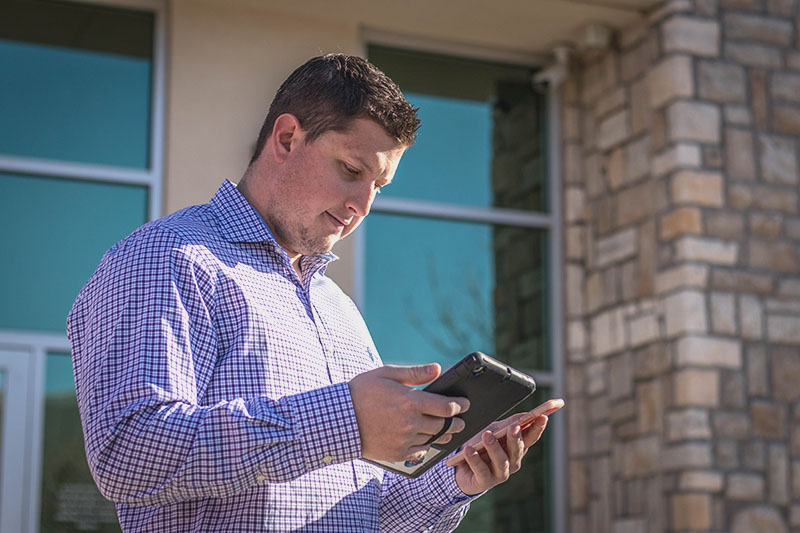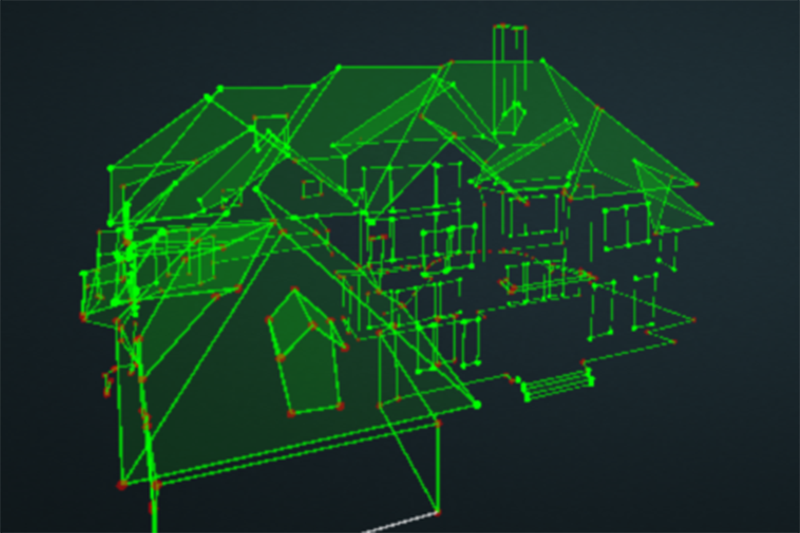The question that keeps presenting itself in every corner of the roofing industry is how are we going to hire and retain the labor we need to keep our industry strong? It is a question that is explored in every roofing association, roofing company, manufacturer and distributor. How are we going to attract talent?
A group of industry thought-leaders came together in the spring of 2017 to try and find solutions for this critical issue with a focus on how technology could make the difference. The Roofing Technology Think Tank (RT3) was started to focus on research and dissemination of technology information that could make a difference not only with attracting and retaining talent but also improving the professional reputation of the roofing industry.
“RT3 is a consortium of thought leaders exploring emerging technology solutions for the roofing industry,” says Heidi J. Ellsworth, one of the founders and current directors of RT3 and a partner with RoofersCoffeeShop.com. “As a group we believe we can develop the atmosphere to inspire learning and networking that will bring important technology into our industry. We are striving to provide critical information about innovative technology and solutions for roofing contractors by bringing together progressive and disruptive expert solutions that can help build the professionalism and appeal of the roofing industry.”
RT3 is committed to finding innovative technology solutions to be used within the roofing industry by enabling ongoing thought leadership and insights from progressive leaders both inside and outside the roofing industry, along with identifying practical resources for implementing potential solutions successfully. The organization is encouraging and enabling roofing contractors to embrace technology as they seek to grow their businesses. With a commitment to disseminating technology advancement information, RT3 believes that technology is one of the top solutions for the labor crisis.
“The next generation is looking to use their technical skills in new ways and the roof is a prime area for innovation,” stated Tom Whitaker, CEO of Harness and a director on the RT3 Board. “Most of our U.S. workforce already use an iPhone and/or tablet daily for their personal life, why would they not want to use them in their work life? We have the opportunity for our labor force to utilize the power of mobile devices on the roof for documentation and education. We need to make it a part of all rooftop systems.”
“The move to robotics on the rooftop is happening,” said Steve Little, Head Coach at KPost Roofing & Waterproofing in Dallas, Texas and an RT3 Director. “At KPOST, we are already incorporating machines on the roof that are more robotic then ever before. Our work crews are learning how to maintain the machinery on the roof while giving even more attention to the details. It is part of the evolution of the roof and incredibly important.”
RT3 was formed to act as a conduit for curating knowledge on technologies that can help roofing contractors and the roofing industry overall. The group has grown from twenty founding members to over sixty. With a board of six directors, both directors and members work to successfully accomplish the objective of supporting the advancement of the adoption of technology within the roofing industry. According to its mission statement, “Roofing Technology Think Tank (RT3), is a consortium of thought leaders exploring emerging technology solutions for the roofing industry, striving to inform contractors by bringing together progressive and disruptive solutions that help build the professionalism and appeal of the roofing industry,”
The think tank meets six times a year, four virtually and two live. Past live meetings included tours of Georgia Tech, BuiltWorlds and the U.S. Capitol. Future meetings will continue to be held at innovative locations that will help enlighten the group on progressive technologies that can make a difference in the roofing industry. “The live meetings have been instrumental to our learning curve,” said Ken Kelly of Kelly Roofing, Naples Florida and an RT3 Director. “The opportunity to see what other trades and the construction industry as a whole are doing is key to us curating information and not wasting time recreating the wheel.”
“It is about education and the initiative to understand and then disseminate innovative technologies into the roofing industry,” continued Ellsworth. “The dissemination portion is just as important as learning about modern technologies. If we cannot adequately share the information, then we will miss a key part of our mission as a think tank.”
To that end, RT3 partnered early on with BuiltWorlds, SmartBrief and RoofersCoffeeShop.com to share information from the think tank and its members. “We need to share the information that we are bringing in and our partnerships have been critical,” stated Trent Cotney, CEO of Cotney Construction Law and a RT3 Board Member. “As part of our incorporation, we looked to other groups who use technology effectively and have proven digital audiences that we could tap into. It has been very effective so far.”
As part of the RT3 mission, the next prime initiative is to launch an online solution directory on the RT3 website. “The solution directory is a place for all technology services or providers to share their technology,” continued Whitaker who developed the directory and website. “We want the industry to visit the site and provide reviews on the technologies. It is the only way we will truly get industry-specific feedback.”
Future meetings will continue to be held at innovative locations that will help enlighten the group on progressive technologies that can make a difference in the roofing industry. The goal is to learn, understand and then disseminate new technologies into the roofing industry. One of the ways to attract the new generation and a diversified labor force is to incorporate the use of technology including robotics, software, cloud solutions and cutting-edge technologies that we are not even aware of yet.
Josey Parks, RT3’s Workforce Development Task Team Chair, recently announced a new millennial toolkit. “We want to help contractors attract millennials, but it is about understanding what they are looking for in a career,” stated Josey Parks, CEO of Metal Roofs of Texas. “Technology is key, but it is also about culture. The two go together and what the next generation is looking for is commitment to its employees. This group of thought leaders that are a part of RT3 are bringing so much more than just information about technology, we are exploring how technology can create a culture of success for us as a trade.”
“The next generation of millennials will demand the use of technology, if we want to compete for talent as an industry, we will need to create an appealing workplace,” confirmed Karen Inman, COO of Antis Roofing out of Orange County, CA. “With a dwindling workforce, we need to be on the front end of recent technologies that will automate the rooftop. Labor is just one of the urgent business problems that can be addressed with these types of progressive ideas.”
“We are encouraging everyone to visit our website at www.rt3thinktank.test, sign up for the RT3 SmartBrief e-newsletter, follow the blogs, review the companies in the solution directory and if interested, apply to join,” confirmed Karen Edwards, communications and engagement leader for RT3 and owner of Casimir Group. “This is the type of organization that brings on change and we want to invite the industry to be involved.”
Photo by Eddie Kopp on Unsplash





 By Dan Ciprari, CEO and Co-founder, Pointivo Inc.
By Dan Ciprari, CEO and Co-founder, Pointivo Inc. Experienced field surveyors independently measured 13 roofs using traditional survey methods, while independent pilots flew autonomous Kespry UAVs over these roofs to capture images and generate 3D models.
Experienced field surveyors independently measured 13 roofs using traditional survey methods, while independent pilots flew autonomous Kespry UAVs over these roofs to capture images and generate 3D models.
